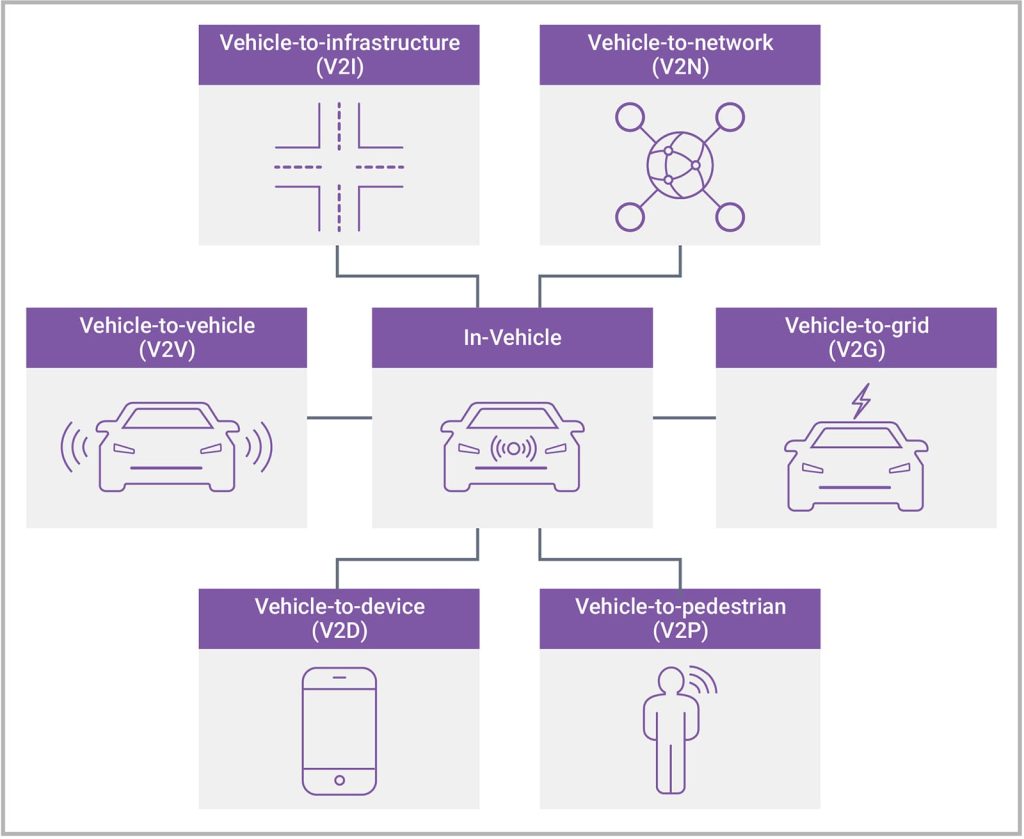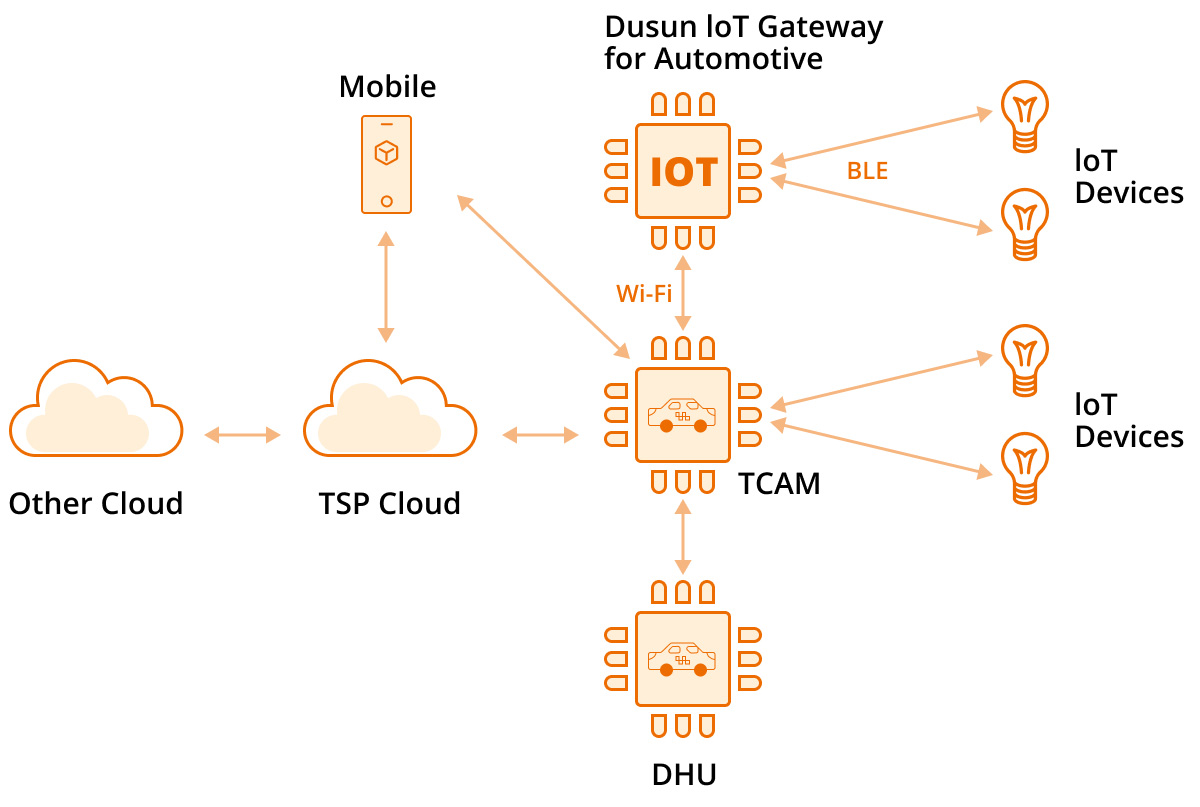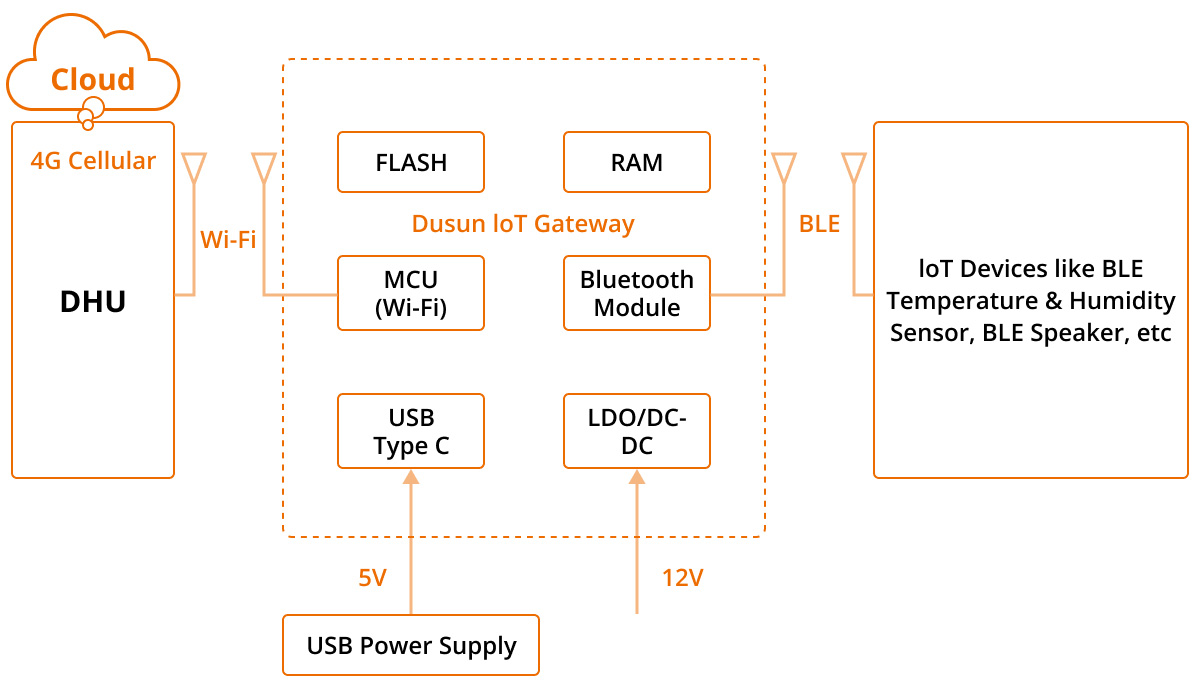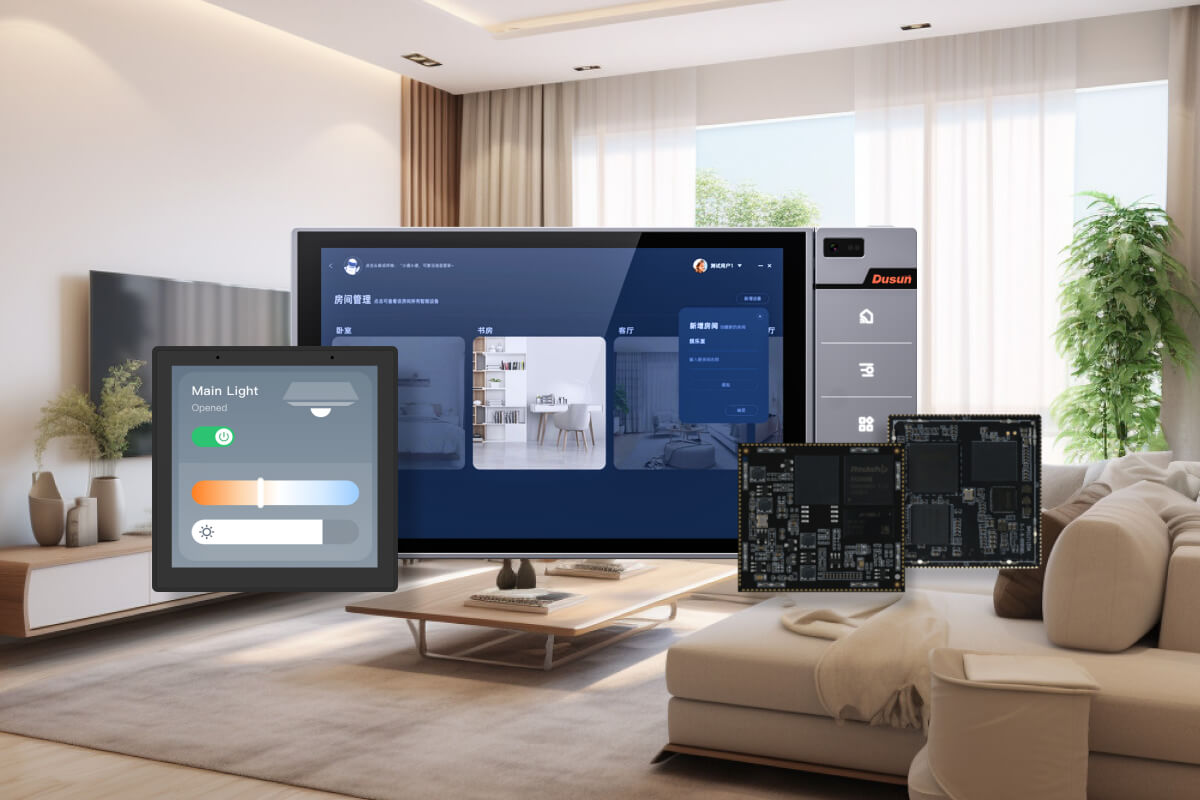Cars are increasingly becoming tech-oriented, incorporating as many electronics (or more) as the mechanical parts. Vehicle-to-device (V2D) is one of the popular technologies emerging in modern vehicles, and it enables the car’s internal modules or components to communicate with external devices, such as wearables and smartphones.
Although V2D enhances the vehicle’s safety and connectivity, it has its implementation challenges. We’ll highlight these issues and explain how Dusun can help you solve them to deploy V2D solutions at low cost. Let’s get started!
What Is Driving Vehicle-to-Device Adoption?
The automotive industry is rapidly evolving to meet customer needs for smarter, safer, and more connected vehicles, and these are the primary factors that are pushing V2D (Vehicle-to-Device) adoption.

This technology involves using an IoT gateway to connect to the external devices via protocols like BLE, and then relay the information to the internal components, such as the center display (DHU) or telematics control unit.
Vehicle-to-Device Market Dynamics
The Vehicle-to-Device market is still evolving, and the dynamics of this industry are changing in the following ways.
Ongoing Innovations
As the V2D market evolves, innovations are happening at a rapid pace in areas like formulations and features. These innovations differentiate products from different manufacturers and drive market growth.
Changing Customer Preferences
IoT V2D manufacturers primarily use the ever-changing customer tastes and preferences to innovate new products or improve existing ones. These changing preferences are important because they influence demand patterns and market trends.
Competition Due to Global Expansion of V2D Brands
As V2D becomes widespread and consumers demand it, more V2D brands and manufacturers are getting onto the bandwagon, creating a competitive industry that is turning out to be more innovative.
Regulatory Changes in the V2D Market
Global acceptance and adoption of any technology leads to stricter regulatory requirements, and V2D is no different. These requirements primarily touch on safety standards, and they are continuing to shape the market dynamics.
How In-Vehicle Gateways for Vehicle-to-Device Enhance Cars
Even as the market dynamics continue to change, V2D is still enhancing the value vehicles provide to consumers in the following ways.

Enabling Remote Drone Control
Controlling drones when driving is risky because it can cause accidents either on the vehicle or the UAV. But V2D can make this safe by allowing you to keep your eyes and attention on the road.
Drones can follow vehicles automatically when set to “follow me” using techniques like:
- GPS Tracking: Drones can follow the signal from a GCS (Ground Control System) or GPS transmitter, which can be the controller or your smartphone.
- Controller Following: These UAVs can also follow an RF signal being emitted from a controller, keeping track of its position and moving along with it.
V2D can simplify this task by using the in-vehicle IoT gateway to emit a GPS transmitter or RF signal that the drone can follow. It can also give you all the controller’s settings on the center display so that you can adjust parameters like the following distance and recording settings from the car.
Enhancing Safety
V2D enables vehicles to share information with traffic devices and infrastructure to prevent accidents and reduce congestion. There is a thin line that separates V2D from V2P and V2I on matters of safety because the vehicle needs to communicate with other cars, traffic infrastructure (traffic lights and smart road signs), and pedestrian devices to enhance road safety.
The goal of this communication is to minimize conflicts between the vehicle, pedestrians, and other vehicles on the road by making each party aware of the presence of the other. If the driver is unresponsive, the IoT gateway can alert the safety system to brake the vehicle to prevent things like running a red light.
Enhancing Autonomous Driving
Autonomous driving is mostly associated with AI, where the computer is trained to identify objects on the road and avoid colliding with them. V2D provides another set of eyes, using RF communication to exchange data with pedestrian devices and road infrastructure. This information can help autonomous systems navigate the vehicle more safely on the roads.
Enabling Remote Vehicle Monitoring and Control
In-vehicle gateways can also give you remote access to critical systems in your vehicle. For instance, you can be able to start your car from your phone to warm the engine during winter, adjust the climate control settings inside, or even get critical information, such as low tire pressure warnings, before getting in.
Personalizing Settings, Media, and Entertainment
While remote control requires human input, personalization settings occur automatically based on the person going to drive the vehicle. In a family setting, this person can be the husband or wife. The BLE gateway’s receiver can detect the incoming device and adjust the cabin to the person’s preferences. These include the climate control settings, seat position, ambient lighting, steering wheel position, and entertainment.
Allowing Child Seat Control
Parents can also benefit greatly from V2D because the technology can connect to child seats at the back to adjust settings like seat angle and rotation. It is recommended to let children under 3 ride in the vehicle when facing the rear, and V2D can make it convenient to adjust this position from the infotainment screen. You can also be able to monitor the baby’s status from the infotainment display when driving because he/she will be facing away from you.
Enabling Seamless Connections With Toll Systems
This V2D application also borders or includes V2I because toll systems are highway infrastructure. But they are also external devices. By creating a seamless connection with these systems, vehicles can pass through toll stops or roads quickly without slowing traffic flow.
Challenges of Traditional Vehicle-to-Device Solutions
Limited Connectivity in Existing Car Systems/Modules
Existing car devices, such as the DHU and telematics control unit, usually have limited connectivity options that hinder the adoption of V2D. Most of them have WiFi and LTE connectivity, with WiFi for in-vehicle communication and LTE for communicating to the internet/cloud.
This has its limitations because WiFi is not as energy-efficient as protocols like BLE, and most external devices use BLE to save on battery life. Therefore, it reduces the scalability of the connectivity options, which hinders V2D adoption.

Reliability Issues
Reliable data exchange between the vehicle and external devices has been challenging because those in-car systems are traditionally developed by the car manufacturers themselves. And to them, this connectivity is not as important as other critical vehicle systems. Therefore, the wireless connections haven’t been as reliable and stable as wired options, and V2D requires reliable wireless links.
Costly Implementation
Traditional V2D solutions are costly because they lack customization options to suit the requirements of different vehicles or customers. The lack of customization also means consumers only get what is available, not what they need.
How Dusun BLE Gateways Solve These Challenges
Enabling Seamless Data Exchange
At Dusun, we’ve specialized in IoT for close to 20 years, and this has given us extensive experience in wireless communication protocols. We have a professional R&D team that perfects these technologies in our hardware in every iteration, so you can expect to get secure, reliable, and seamless communication from the gateway installed in the vehicle to the external devices.
This reliability is particularly critical for real-time control applications, such as remote drone control.
Multi-Protocol Design
Most traditional V2D solutions had limited connectivity, and our BLE gateways bridge this by providing multi-protocol connections. For instance, the DSGW-030-4 ZigBee, Bluetooth, and WiFi gateway hub features both BLE and WiFi, so you can link it to the various car modules using WiFi, and then communicate with the external devices via Bluetooth.

Hardware Customization
Customization is our forte. You can opt to buy ready-made BLE gateways for your V2D project, which will shorten the time to market. However, it is also possible to customize the hardware to have only the essential requirements of the project, which can lower costs and meet the pricing targets.
Such an approach will provide value for money to the car maker by making the solution cost-effective and competitive. It will also benefit the customer by providing exceptional performance and a low cost.
Conclusion
The car market is becoming increasingly competitive, and V2D is one of the technologies you can use to make your product stand out. But it needs to be perfect and low cost to make business sense. At Dusun, we can help you get a suitable gateway for your V2D solution because we have:
- Strong R&D capabilities from a team comprising experts in integrated chips, deep learning core algorithms, radio communication, etc., from prestigious universities globally.
- A complete ecosystem consisting of rich experiences in V2X, smart homes, IoT medical devices, location tracking, smart industries, etc. So even as the V2D field evolves, we will help you upgrade your systems accordingly.
- Direct-to-market and ODM services to enable high customization, compatibility, and cost-effectiveness.
Ready to order your V2D gateway or want to inquire more about our in-vehicle gateway solutions for V2D and other V2X, fill in your details in this contact form, and we’ll be in touch.


















